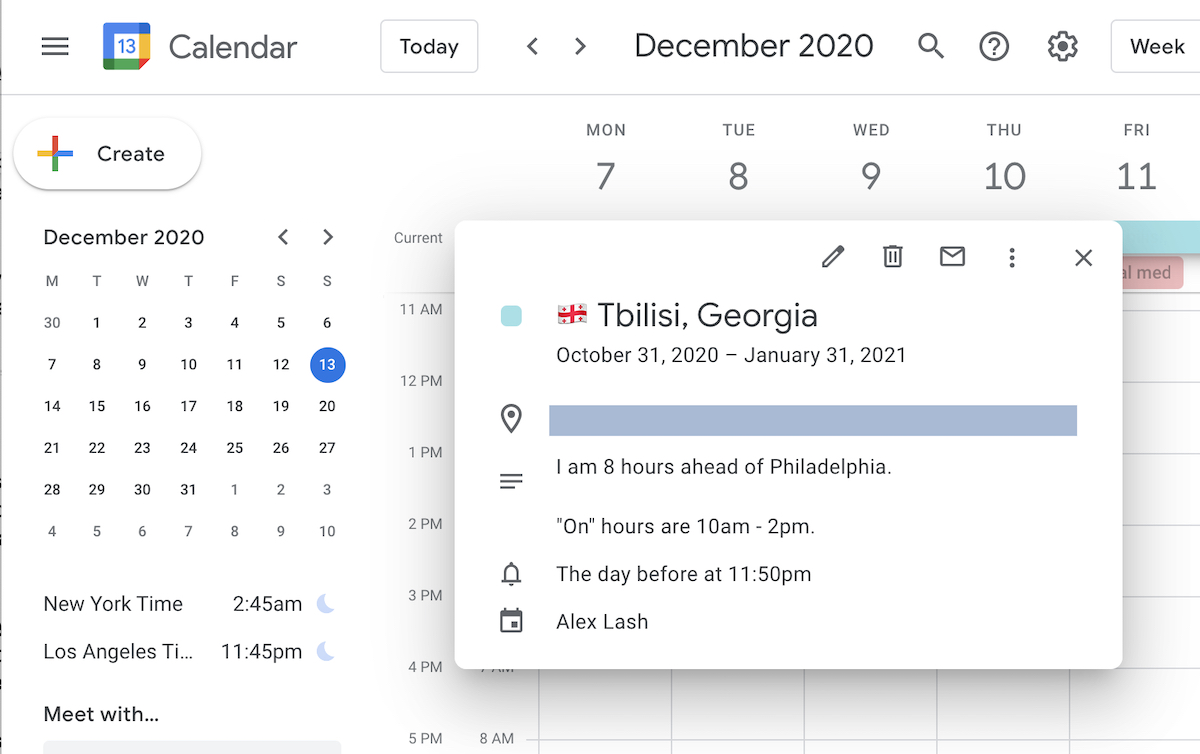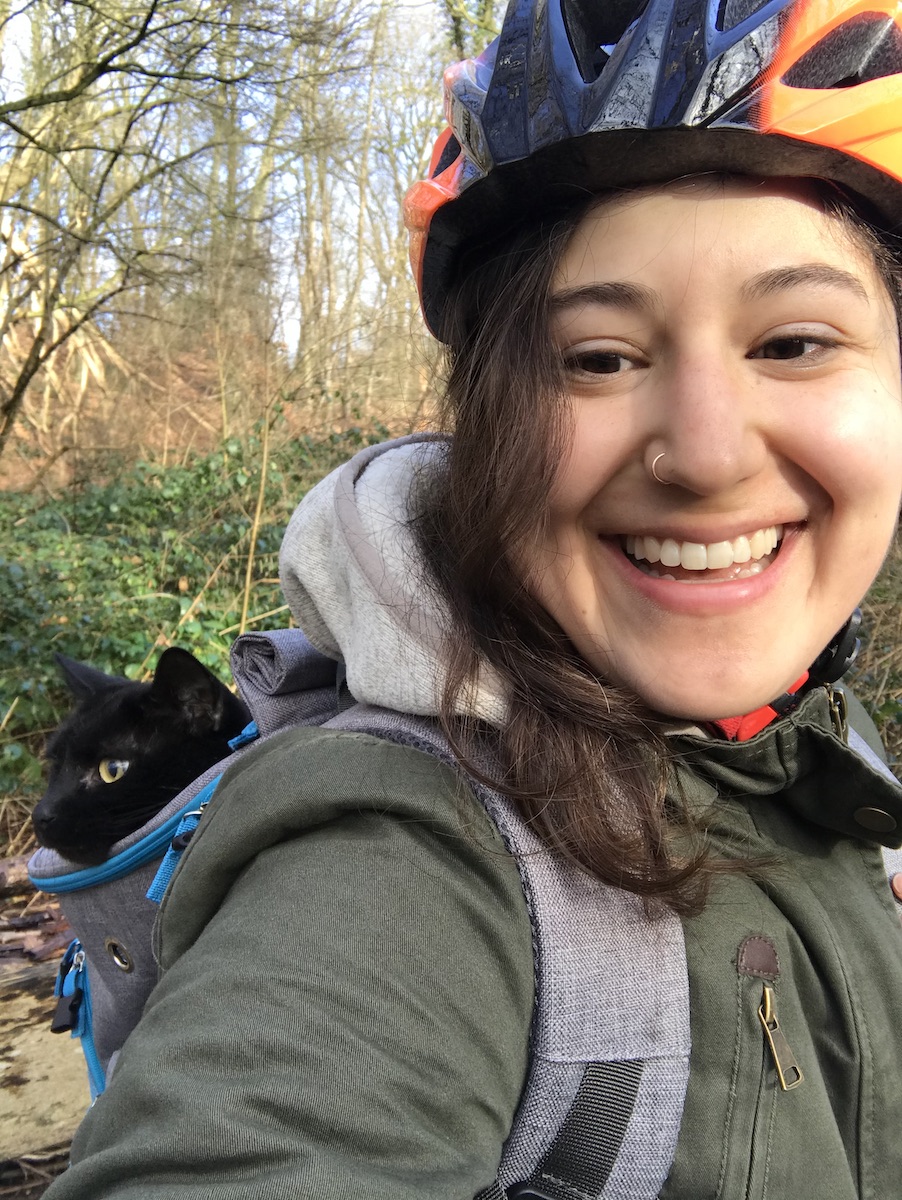In the latter half of 2019, I sold and gave away anything that wouldn’t fit in a suitcase and began living the life of a digital nomad.
It’s quickly becoming a cliche to say so, but 2020 surely wasn’t what I expected. Like everyone else, my traveling days are on hold and I write this article from Tbilisi, Georgia on the Remotely from Georgia permit. Despite settling down, I thought I’d share some of what I learned from my year as a digital nomad.
Working from a non-fixed address
It seems like everyone has had to learn how to work remotely at this point, but there were some aspects of my experience that are fairly unique to this lifestyle. I work at a Philly-based professional services firm that specializes in geospatial software for good called Azavea. Though we have several remote employees, my situation is fairly unique for the company. Before I left, and as we adjusted to the change, my team and I came up with some ways to deal with the inherent variability of the digital nomad lifestyle.
Dealing with time zones
Given the clear potential for time differences (my first stop, for example, was six hours ahead of the East Coast), we agreed to a split schedule. I need to be online from 10 a.m. to 2 p.m. ET but the rest of my day is flexible. We did this so that I could still have regularity and meetings with my colleagues at reasonable hours, but not have to become nocturnal.
This has worked pretty well for the majority of my travels. The late “on” hours are made up for with the flexibility I have with the rest of my day. All told, this was a great compromise and I’ve been working on this schedule in various time zones.
“Where are you now?”
There are a lot of folks in the office who I don’t get to work with as much as I would like, and I wanted a way to make my current location transparent. To help with this, I do two things: Add calendar events that span my time in a location and add the location to my Slack profile using the status feature.

Alex Lash’s Google Calendar reminds coworkers of her current location — now, Tbilisi, Georgia. (Courtesy image)
I started out doing this just for my calendar, but realized pretty quickly that people didn’t always notice it there. Adding it to Slack had the added benefit of colleagues having a reason to reach out to me to ask about the new place I was in or share their own tips and tourist destinations. This was undoubtedly the best part, since it allowed me to have impromptu conversations with people, despite being miles away from the office.

Alex Lash’s current Slack location. (Courtesy image)
Flexibility and embracing the chaos
Bad and spotty Wi-Fi, getting bitten by stray dogs (everyone’s OK), transit hiccups, global pandemics … All the planning in the world can’t account for everything. I’ve made sure to be flexible with my schedule, and agree to work outside of the “on” hours when need-be. Regular one-on-ones (which are already something we do at my company) have allowed me to keep my manager aware of everything that’s going on.
Nomading (or not) in a pandemic
No 2020 digital nomad article (or really, any article) would be complete without some mention of the many challenges that the COVID-19 pandemic presented.
The start of something
When the pandemic first started, there was so much conflicting information that it was difficult to know what to do. Flights back to Philadelphia would be many hours long and multiple stops, not to mention hotbeds for the virus. A lot of nomad Facebook groups cropped up, so I began following all of the newly made tools and trolling through forums to keep updated on restrictions, news and info on what others in my situation were doing.
Looking for a place to stay put
I ended up staying in my nonpermanent home when the pandemic hit, rather than taking one of the emergency flights back to Philadelphia. There were a few reasons for this, but certainly the biggest had to do with the already most difficult to plan part of my digital nomad journey: I had been traveling with a cat.

Turtle! (Courtesy photo)
Once it became clear that the COVID-19 virus wasn’t going to dissipate in the summer (remember when we thought that was a possibility?), I began looking for a more long-term solution so that (a) I wouldn’t have to go far and (b) I could lock down safely. Fortunately, countries had started announcing new visas and entry permits for people like me. I was ultimately deciding between Estonia’s Digital Nomad Visa and Georgia’s Remotely from Georgia program. Georgia’s program gave me more security — once you apply, you hear back within a couple of weeks and are guaranteed entry — and seemed to promise a less harsh winter than Estonia, so I signed up and hoped for the best.
Settling down in a new country
So almost a year into the nomading lifestyle, I’m effectively staying put in Georgia. My life since March isn’t much different than it would have been back home. I spend most of my time watching loads of movies, video chatting with friends, doing random crafting hobbies, and working. It’s certainly been a wild ride, but despite the stress and uncertainty that this year’s challenges has brought, I’ve managed to keep growing professionally and personally.
Before you go...
Please consider supporting Technical.ly to keep our independent journalism strong. Unlike most business-focused media outlets, we don’t have a paywall. Instead, we count on your personal and organizational support.
3 ways to support our work:- Contribute to the Journalism Fund. Charitable giving ensures our information remains free and accessible for residents to discover workforce programs and entrepreneurship pathways. This includes philanthropic grants and individual tax-deductible donations from readers like you.
- Use our Preferred Partners. Our directory of vetted providers offers high-quality recommendations for services our readers need, and each referral supports our journalism.
- Use our services. If you need entrepreneurs and tech leaders to buy your services, are seeking technologists to hire or want more professionals to know about your ecosystem, Technical.ly has the biggest and most engaged audience in the mid-Atlantic. We help companies tell their stories and answer big questions to meet and serve our community.
Join our growing Slack community
Join 5,000 tech professionals and entrepreneurs in our community Slack today!

The person charged in the UnitedHealthcare CEO shooting had a ton of tech connections

From rejection to innovation: How I built a tool to beat AI hiring algorithms at their own game

Where are the country’s most vibrant tech and startup communities?



